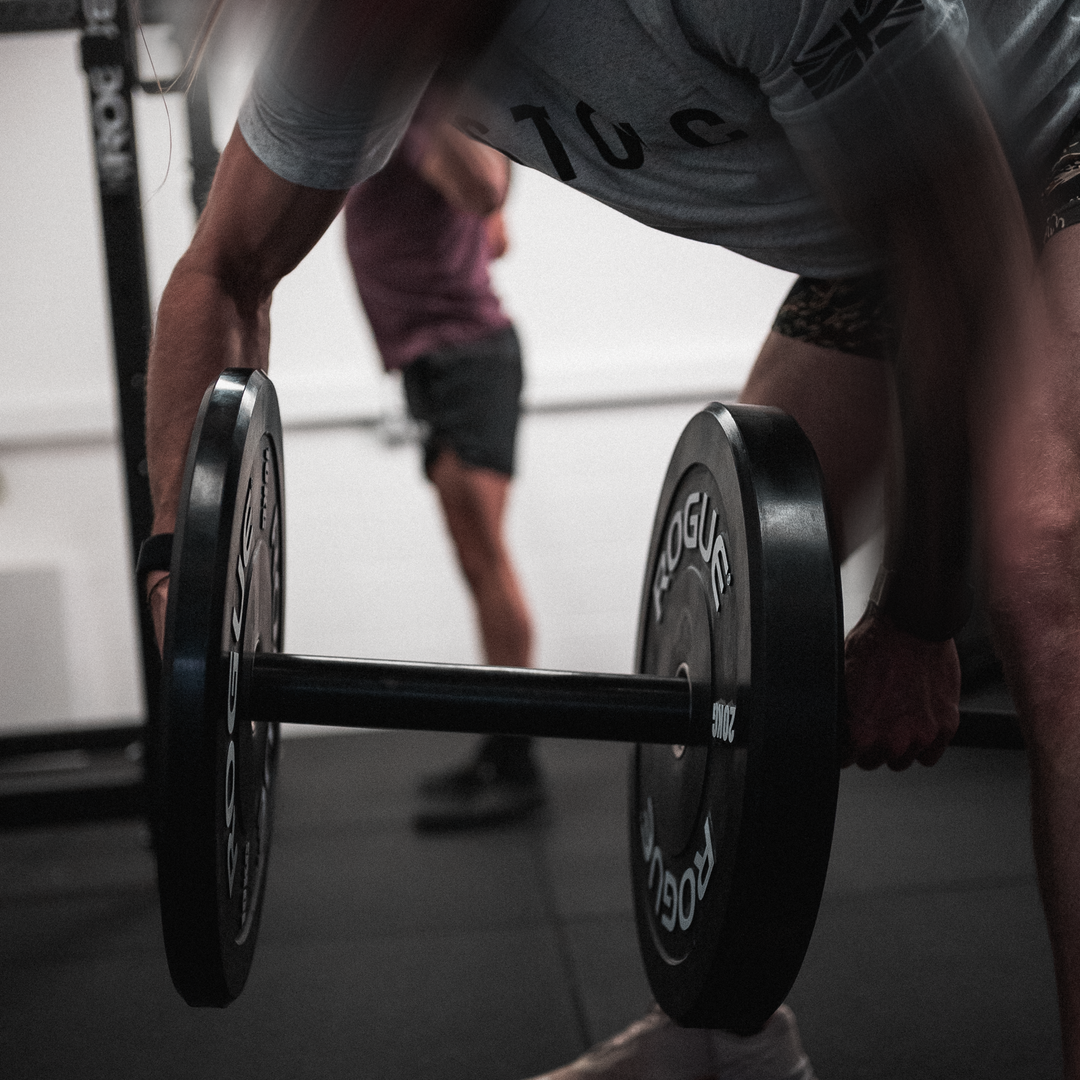HOW TO WARM UP TO WORKING SETS

When starting out in strength training it can be hard to know whether you should be building up the load you are using throughout your working sets or if all of your working sets should be performed at the same working load.
We’re going to break down what we recommend for this, how best to structure and view your building sets and working sets and some other advice on how to approach building strength. This article isn’t going to delve into the specific mobility work done before sessions to improve your joint function but will instead focus on how best to approach building up into your first exercise.
To build or not to build:
These building sets should be approached with the intention of trying to increase your neural activation, groove the motor pattern of the exercise and progressively load your joints to get used to the working weight you are planning to use.
We’re going to use the example of your first exercise being 4 sets of 6-8 reps of a back squat and how to build up to it. After you have finished the mobility and body temperature raising movements specific to your needs you’ll be ready to start the movement specific warm up.
This part of the warm up should always be done with the exact movement pattern and intention you’ll be using in your working sets. So if you’re doing back squats as the main movement, then use back squats in your building sets. Use this part to really focus in on the movement cues and purposefully practicing the execution of the exercise. It’s important to not lose focus here as that will prime your body for incorrect movement patterns that will then carry over into your working sets.
We recommend that you take between 1-5 sets to specifically warm up to the first working set, dependant on the reps you are doing in the sets, and that all of the working sets should all be done at the same weight or higher. Generally the higher the reps you’re needing to do in the working sets, the fewer the build up sets you’ll need to perform and conversely the lower the reps in your working sets, the higher number of building sets you’ll need.
In an ideal world you shouldn’t have to drop the weight within a workout on your strength based exercises, but with that being said, we’ve all had those sessions where we’ve overestimated how good we were feeling to the detriment of our form – so don’t be afraid to lower the weight if you form is overly compromised and you’re not making the prescribed rep range.
For our example of 4 working sets we should aim for 2-3 sets to build up to the weight we’re going to be using the first set. So if we’re aiming to use 70kgs in set one for 4-6 reps, our building warm up could look like this:
Build set 1 – 30kgs for 5 reps
Build set 2 – 50kgs for 4 reps
Build set 3 – 60kgs for 3 reps
First working set – 70kgs for 6-8 reps.
Notice how we don’t recommend doing the reps that are prescribed for the working set. There’s no need to exhaust yourself by doing 3 or more warm up sets of 8 reps and then completing 4 sets of 8 after that. You’re going to get the greatest gains in strength from the working sets so we’re looking to emphasis your ability to complete those sets. It is normal to see people build up within their working sets and not always increase the weight in a uniform way week to week. Also worth noting here that we were making bigger jumps in the loads we’re using in the building sets at the beginning and then smaller jumps the closer we got to our working weight.
Working it out:
So lets break this method down volume wise over a session using the same 4×6-8 on back squats and look at why this isn’t a good option from a consistency point of view:
Working Set 1 – 50kgs – 8 reps
Working Set 2 – 60kgs – 8 reps
Working Set 3 – 70kgs – 8 reps
Working Set 4 – 70kgs – 7 reps
Here we can see the total load lifted is going to be 1930kgs assuming they hit all the reps. This number could fluctuate week to week if the jumps used in the first 3 sets are different or the athlete drops down the rep ranges.
Now lets looks at an example of the volume comparison for someone working at 70kgs the whole time:
Working Set 1 – 70kgs – 8 reps
Working Set 2 – 70kgs – 8 reps
Working Set 3 – 70kgs – 8 reps
Working Set 4 – 70kgs – 8 reps
Here we can see the total load lifted is going to be 2240kgs again assuming they hit all the reps. That’s a difference of 310kgs which, when we consider this is only one exercise and one session, could mean you swing your weekly volume high and low without truly realising it.
Wrapping it up:
This example gives us a clear understanding as to why approaching building sets correctly will lead to more consistency in training and a greater increase in strength gains. This will also lead to more compounding factors like better load management in your training which is the number one factor for reducing the risk of musculoskeletal injuries which in turn will also lead to greater strength overall as you’ll need to take less time off due to any injuries and therefore will be able to be more consistent in your training for longer.
In conclusion:
- Use an appropriate amount of building sets to warm up to the working weight.
- The weight jumps in the building sets should be bigger when the weight is lighter and get smaller as you get closer to your working weight.
- Focus in and use the same exercise, tempo and form but fewer reps than you’ll be using in your session.
- Try to always use the same weight (or more) in your working sets.




